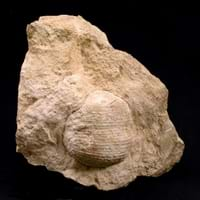Definition
Lignite is a soft brownish coal which shows traces of plants and is intermediate between bituminous coal and peat
Limestone is a sedimentary rock composed mostly of calcite and aragonite, which are different crystal forms of calcium carbonate
Origin
France
New Zealand
Discoverer
Unknown
Belsazar Hacquet
Etymology
From French, Latin lignum wood + -ite1
From lime and stone in late 14th Century
Class
Sedimentary Rocks
Sedimentary Rocks
Sub-Class
Durable Rock, Soft Rock
Durable Rock, Medium Hardness Rock
Group
Not Applicable
Not Applicable
Other Categories
Coarse Grained Rock, Fine Grained Rock, Medium Grained Rock, Opaque Rock
Fine Grained Rock, Opaque Rock
Texture
Amorphous, Glassy
Clastic or Non-Clastic
Color
Black, Brown, Dark Brown, Grey, Light to Dark Grey
Beige, Black, Blue, Brown, Cream, Gold, Green, Grey, Light Green, Light Grey, Linen, Pink, Red, Rust, Silver, White, Yellow
Durability
Durable
Durable
Appearance
Veined or Pebbled
Rough and Banded
Interior Uses
Not Yet Used
Decorative Aggregates, Interior Decoration
Exterior Uses
Not Yet Used
As Building Stone, As Facing Stone, Garden Decoration, Office Buildings
Other Architectural Uses
Not Yet Used
Curbing
Construction Industry
for Road Aggregate, Steel Production
Cement Manufacture, Cobblestones, for Road Aggregate, Production of Glass and Ceramics, Raw material for the manufacture of mortar, Roadstone, Source of calcium
Medical Industry
Not Yet Used
In Chemical and Pharmaceutical Industry, Medicines and Cosmetics
Antiquity Uses
Not Yet Used
Artifacts, Monuments, Sculpture, Small Figurines
Commercial Uses
Electricity Generation
Animal feed filler, As a Feed Additive for Livestock, Paper Industry, Raw material for manufacture of quicklime, slaked lime, Soil Conditioner, Used in aquariums, Whiting material in toothpaste, paint and paper
Types
Xyloid Lignite or Fossil Wood and Compact Lignite or Perfect Lignite
Chalk, Coquina, Fossiliferous Limestone, Lithographic Limestone, Oolitic Limestone, Travertine, Tufa
Features
Generally rough to touch, Helps in production of Heat and Electricity, Used as fossil fuel
Host Rock for Lead, Stalactites and stalagmites are formed from this rock, Zinc and Copper Deposits
Archaeological Significance
Monuments
Not Yet Used
Used
Famous Monuments
Not Applicable
Acropolis of Athens in Greece, Agia Sophia in Istanbul, Turkey, Al Aqsa Mosque in Jerusalem, Angkor Wat in Cambodia, Big Ben in London, Charminar in Hyderabad, India, Chhatrapati Shivaji Terminus in Maharashtra, India, Chichen Itza in Mexico, Empire State Building in New York, Khajuraho Temples, India, Kremlin in Moscow, Louvre in Paris, France, Neuschwanstein in Bavaria, Potala Palace in Lahasa, Tibet, Wailing Wall in Jerusalem
Sculpture
Not Yet Used
Used
Famous Sculptures
Not Applicable
Ajanta Caves in Maharashtra, India, Elephanta Caves in Maharashtra, India
Figurines
Not Yet Used
Used
Formation
Coal formation takes place due to accumulation of plant debris in a swamp environment. The Coal formation process continues, as peat turns into lignite brown or black coal at increasing heat and pressure.
Limestone is a sedimentary rock which is mainly made up of calcium carbonate.
Mineral Content
Not Available
Calcite, Chert, Clay, Dolomite, Quartz, Sand, Silt
Compound Content
Carbon, Hydrogen, Nitrogen, Oxygen, Sulphur
Aluminium Oxide, NaCl, CaO, Iron(III) Oxide, FeO, MgO
Types of Metamorphism
Not Applicable
Not Applicable
Types of Weathering
Biological Weathering, Chemical Weathering, Mechanical Weathering
Biological Weathering, Chemical Weathering, Mechanical Weathering
Types of Erosion
Chemical Erosion, Water Erosion, Wind Erosion
Chemical Erosion, Coastal Erosion
Grain Size
Medium to Fine Coarse Grained
Fine Grained
Fracture
Conchoidal
Splintery
Porosity
Highly Porous
Less Porous
Luster
Dull to Vitreous to Submetallic
Dull to Pearly
Compressive Strength
Not Available
Cleavage
Non-Existent
Non-Existent
Toughness
Not Available
1
Specific Gravity
1.1-1.4
2.3-2.7
Transparency
Opaque
Opaque
Density
800-801 g/cm3
2.3-2.7 g/cm3
Resistance
Heat Resistant
Pressure Resistant
Deposits in Eastern Continents
Asia
Bangladesh, Burma, Cambodia, China, India, Indonesia, Kazakhstan, Malaysia, Mongolia, Pakistan, Turkey, Vietnam
Brunei, India, Indonesia, Malaysia, Singapore, Thailand, Vietnam
Africa
Botswana, Kenya, Morocco, Mozambique, South Africa, Tanzania
Cameroon, Chad, Ghana, Kenya, Malawi, Sudan, Tanzania, Togo, Zambia, Zimbabwe
Europe
Belgium, Bulgaria, England, France, Germany, Greece, Hungary, Kosovo, Netherlands, Norway, Poland, Romania, Serbia, Slovakia, Slovenia, The Czech Republic, Ukraine, United Kingdom
United Kingdom
Others
Not Yet Found
Not Yet Found
Deposits in Western Continents
North America
Canada, Mexico, USA
USA
South America
Brazil, Chile, Colombia, Venezuela
Colombia
Deposits in Oceania Continent
Australia
New South Wales, Queensland, Victoria
Adelaide, New Zealand, Queensland, Tonga, Victoria, Yorke Peninsula
All about Lignite and Limestone Properties
Know all about Lignite and Limestone properties here. All properties of rocks are important as they define the type of rock and its application. Lignite and Limestone belong to Sedimentary Rocks.Texture of Lignite is Amorphous, Glassy whereas that of Limestone is Clastic or Non-Clastic. Lignite appears Veined or Pebbled and Limestone appears Rough and Banded. The luster of Lignite is dull to vitreous to submetallic while that of Limestone is dull to pearly. Lignite is available in black, brown, dark brown, grey, light to dark grey colors whereas Limestone is available in beige, black, blue, brown, cream, gold, green, grey, light green, light grey, linen, pink, red, rust, silver, white, yellow colors. The commercial uses of Lignite are electricity generation and that of Limestone are animal feed filler, as a feed additive for livestock, paper industry, raw material for manufacture of quicklime, slaked lime, soil conditioner, used in aquariums, whiting material in toothpaste, paint and paper.









